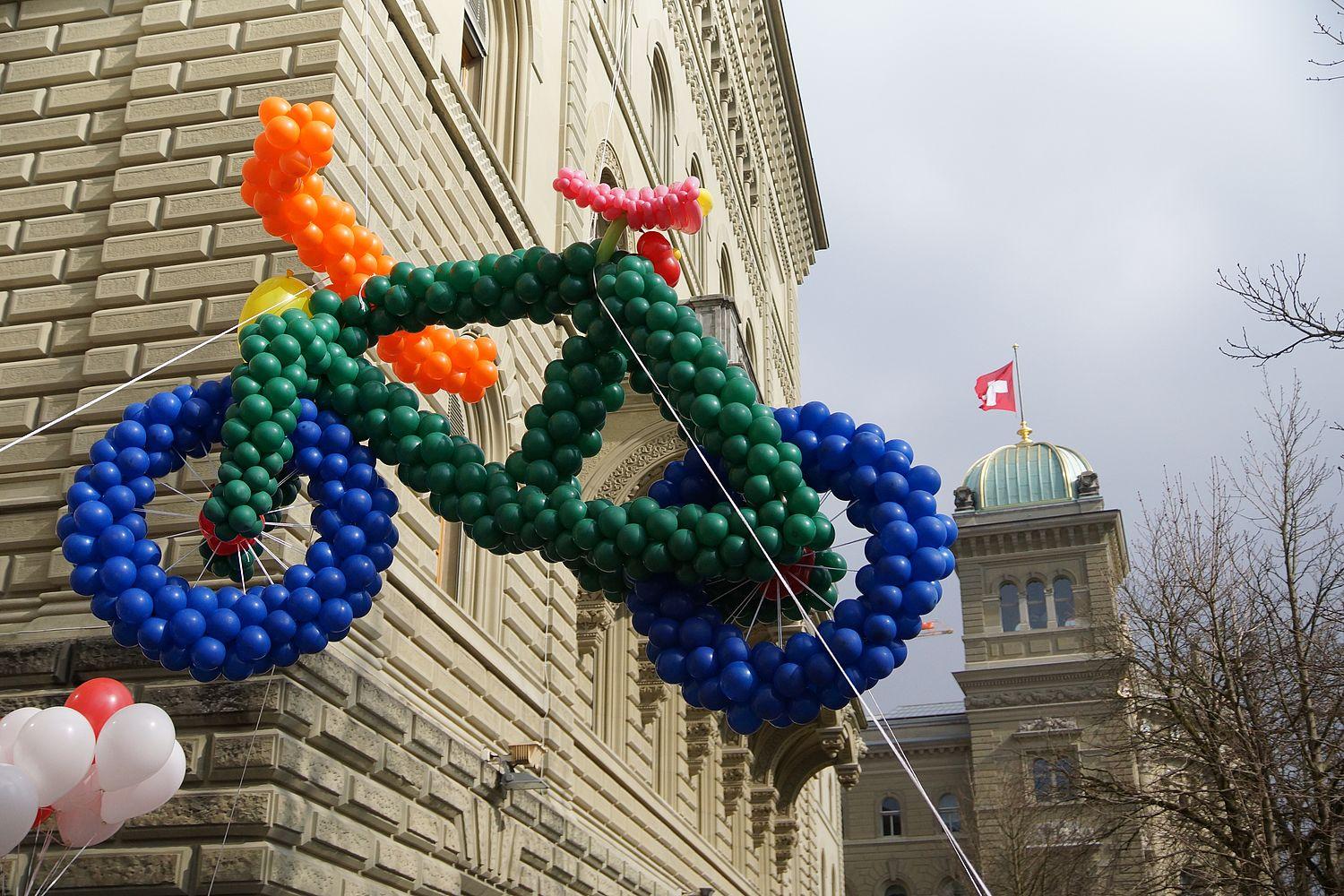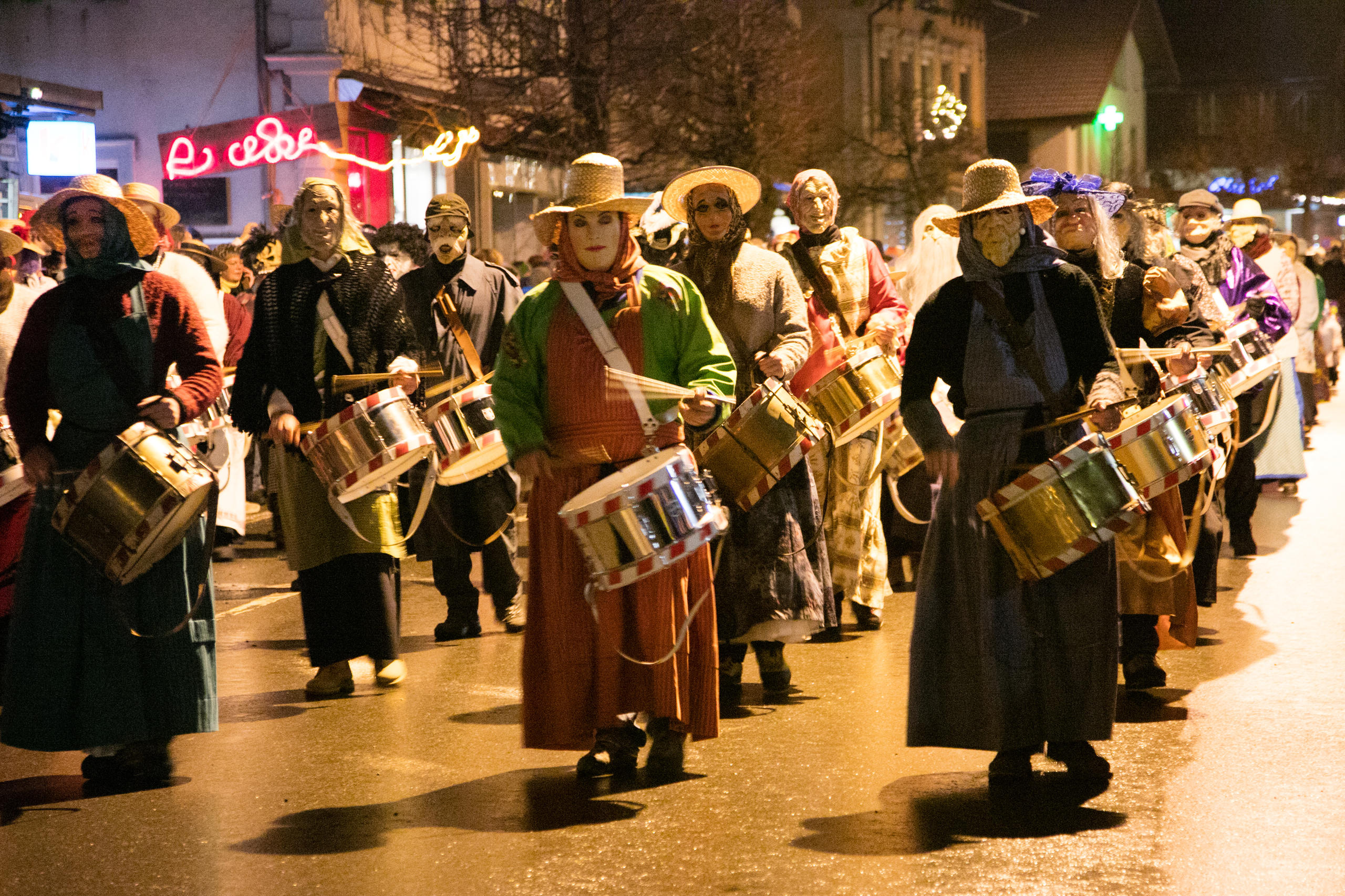People’s power for pedal power

Promoters of bicycle-friendly transportation want to see the government take a greater role, supporting local authorities pushing ahead with projects to make biking more attractive and safe. How can mountainous Switzerland make itself more of a paradise for pedal power enthusiasts?
Voters are likely to have the final say on a people’s initiative aimed at boosting the use of bicycles, following the collection of the necessary signatures. They were handed in to the federal authorities at the beginning of March.
Apart from specific tourist information on specially labelled bicycle routes and a broad comparison between six cities and towns, no detailed data is available on how many total kilometres of bike lanes exist in Switzerland.
However, bike promoters agree that more could be done to provide a bicycle-friendly environment, notably in the French- and Italian-speaking regions of Switzerland, where people traditionally are more car-oriented.
“The typical mindset there is different from the German-speaking part. But it is slowly changing too,” says Jean-François Steiert, president of the Pro Velo pressure group and parliamentarian for the Social Democratic Party.
He highlights progress made in the city of Lausanne or in some cities in neighbouring France, where the needs of cyclists have been taken into account by traffic engineers.
Marco Romano, a parliamentarian and member of the bicyle initiative committee acknowledges that his native Ticino region lags behind and has the status of a “developing country”, as he quips. He argues the southern Swiss region would be well advised to boost bike infrastructure, notably for tourists.

More
Can Swiss commuters have it all?
More than lanes
Compared with the Netherlands or Denmark, Switzerland’s topography is rather unfavourable for cyclists that do not like to climb hills, with only about a third of its surface being more or less even.
Switzerland is considered about average in terms of its catering to bicyclists when compared to most other countries, but there is considerable potential for development.
One in ten people work within 5km from home, an ideal distance for cycling, according to Steiert.
Promoting bicycles is not just about building separate lanes here and there, but it includes enough parking space, zones with 30km/h speed restrictions, a system of fast- and slow track lanes, fewer traffic lights and an increased awareness of the needs of non-motorised two-wheelers in urban planning.
Average
Evi Allemann, president of the Environment and Transport Association and parliamentarian, sees great potential in urban areas in a flat landscape.
“It takes a whole set of bigger and smaller measures to make cycling more attractive,” she says. For Allemann it is key to provide favourable infrastructure.
Obviously, cities or towns in a hilly environment face more difficulties, but the popularity of electro-bikes has opened new possibilities.
“You can climb mountains with an e-bike,” says Steiert.
Pro Velo was the first group this year to hand in signatures collected for a people’s initiative.
Following discussions in parliament, the government will set a date for a nationwide vote.
The proposal is among more than 20 initiatives on a wide variety of issues currently pending.
At least valid 100,000 signatures are needed, which must be collected within 18 months, to force a nationwide vote.
The campaigners demand support of bicycling from the federal government anchored in the Swiss constitution. Just like footpaths and hiking trails are.
The Federal Office of Topography, the authorities responsible for geographic reference data, know how much they measure. An impressive total of about 24,000km are marked specifically as mountain hiking trails.
Campaign
It took the campaigners about eight months to gather the necessary number of signatures for the bicycle initiative. It has the support of politicians from the left to the centre-right.
Daniel Bachofner says people’s response in the streets was generally positive.
“Our proposal seems to be reasonable enough even for motorists. We explained to them that it is also in their own interest to have fewer bikes on the road,” the campaign manager says.
The collection was particularly successful in the regions west of Zurich and in Bern, according to Bachofner.
“This is primarily because there were very active groups of campaigners in these regions,” he explains.
Altogether 121,000 signatures were collected until last December. Just over 105,000 of them were handed in to the Federal Chancellery at the beginning of March.

In compliance with the JTI standards
More: SWI swissinfo.ch certified by the Journalism Trust Initiative













You can find an overview of ongoing debates with our journalists here . Please join us!
If you want to start a conversation about a topic raised in this article or want to report factual errors, email us at english@swissinfo.ch.